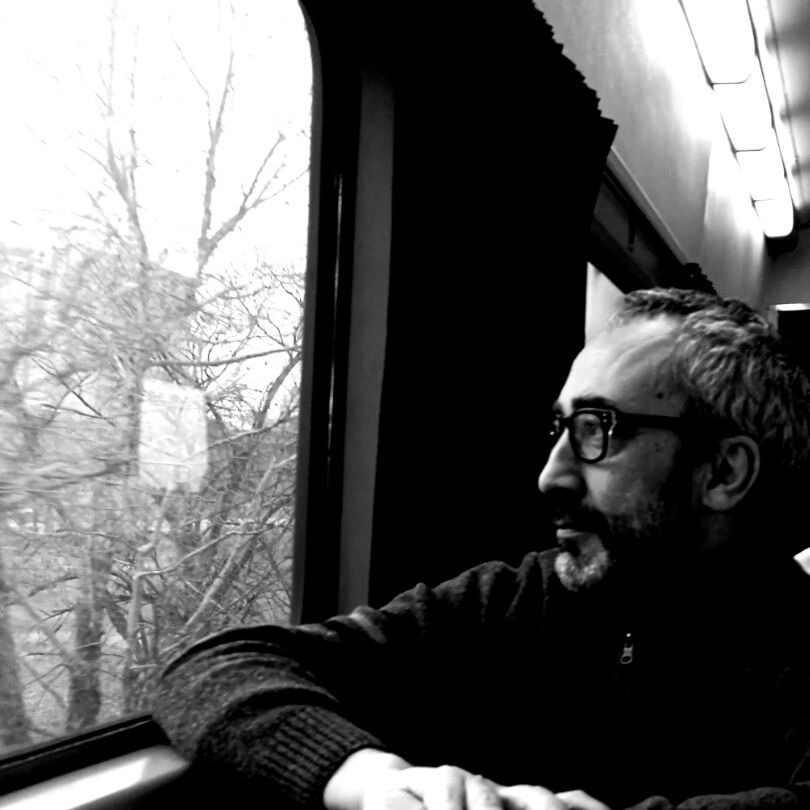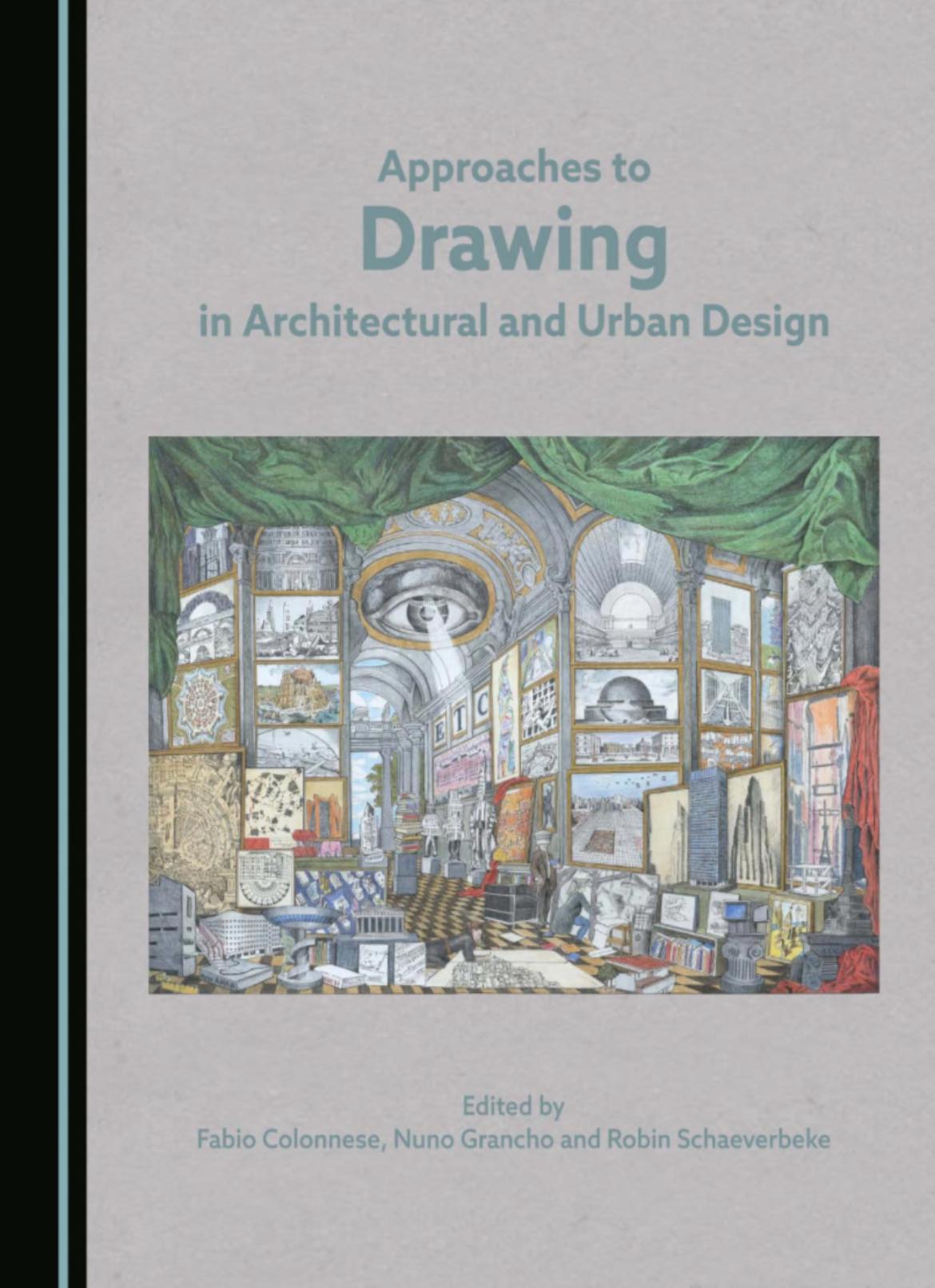New book by PRIVACY Postdoctoral Researcher Marie Skłodowska-Curie Fellow Nuno Grancho

Together with colleagues Fabio Colonnese and Robin Schaeverbeke, Nuno Grancho edited the book Approaches to Drawing in Architectural and Urban Design and wrote the introduction.
Nuno Grancho is also the author of the chapter ‘Subaltern Drawings: Can Architecture, Urbanism, and Fieldwork Strike Back?’
The editors have chosen to include dialogues and interviews with experts in the field in the first part of the book; what does this specific format contribute?
The book is organised into four sections or disciplinary lenses: a practice-based lens presents interviews with influential professionals; the historical lens (re)positions architectural drawing in different time frames and from different points of view; the theoretical lens investigates methods and methodologies to inquire drawing as means of knowing; and, finally, the transdisciplinary lens investigates provisional transgressions of architecture into art, hybrid practices, education, perception into imagination.
However, the editor's contribution is more than presenting the published results. It is a retrospective analysis of the whole process, which is indirectly documented by a multitude of virtual meetings, notes, ideas, drafts, contracts, revisions and tons of emails gathered by the editors in three years. These documents tell the story of the many ways drawing in architecture and urban design provides an embodied knowledge base representative of architectural design and production processes. In our case, drawing was able to connect people not only on an academic or scientific level but also on an emotional and collective level. The format of dialogues and interviews with practitioners about drawing brings several key insights to research on architecture and urbanism with rich, first-hand accounts that enrich research on architecture and urbanism by emphasising the enduring significance of drawing as a fundamental aspect of architecture and urbanism beyond just representation.
The authors highlight the essential role of drawing as a tool for thinking, conceptualising, and communicating architectural ideas beyond just representation. The authors emphasise drawing as a fundamental aspect of the architectural design process, fostering creativity, intuition, and a deeper understanding of spatial relationships. The authors reveal how drawing serves as a medium for discovery, exploration, and making ideas tangible rather than just a final presentation technique. The authors underscore how drawing, as a form of writing and reading, is integral to the architect's way of thinking, in contrast to the increasing reliance on computer-aided design. They provide valuable perspectives on alternative approaches to architectural practice that challenge dominant frameworks, offering insights for architectural education and research.
In your chapter Subaltern Drawings: Can Architecture, Urbanism, and Fieldwork Strike Back?, you are investigating how architecture and cities are analysed around making sense of what it means to have a voice through drawing.
Please give us the most important insights from your article:
In my chapter Subaltern Drawings: Can Architecture, Urbanism, and Fieldwork Strike Back? writing about post-colonial India, I discuss architectural drawing and ethnography to understand and
represent the spaces of marginalised and subaltern groups. I emphasise the agency of drawing, note-taking, and drawing together to create a rich and detailed record of the experiences and observations of the architect, which can lead to a more nuanced understanding of the culture or community being studied. I also highlight the complexity and diversity of social and cultural practices and challenge dominant narratives and assumptions by addressing the question of representation in postcolonial and subaltern studies. Finally, I discuss the need to overcome binary systems and cultural differences in studying non-western architectures and cities and emphasise the importance of recognising and describing marginalised spaces and spatial practices.
Based on my fieldwork, I documented through drawings examples of subaltern architecture and urbanism from places like Diu, Mumbai, Goa, Pondicherry, Tranquebar and Serampore. These examples include for example, typologies of: informal markets that often exist outside of formal planning and development processes, and drawing has been used as a tool to capture their spatial complexities and alternative logics; unplanned settlements and slums where drawings can be used to document the spatial practices and built environments of unplanned settlements and slums, which are often overlooked in official spatial archives. Mapping and analytical diagrams can help reveal the hidden logic and community-driven processes that shape these marginalised urban spaces; indigenous and vernacular architecture where drawing can be a valuable method for documenting and understanding indigenous and vernacular architectural forms, which may not be represented in dominant architectural discourses. Drawings can capture the materiality, spatial organisation, and cultural significance of these alternative building practices; and finally, temporary and ephemeral urban interventions where drawing can be used to record and analyse temporary or ephemeral urban interventions, such as street vending, informal transportation networks, or community-led placemaking initiatives. These drawings can help reveal the dynamic spatial practices and contestations that shape the everyday life of cities.
The chapter I authored highlights how drawing can be a powerful tool for documenting and analysing subaltern architectures and urban spaces that are often marginalised or invisible in official spatial representations. By using drawing as a research method, I can give voice to marginalised communities' spatial practices and built environments, challenging dominant narratives and introducing alternative ways of understanding the city.
You investigate travel literature from the time of colonialism as a power tool, and you use your research trip to India to understand the mechanism of drawings.
What are your main findings?
I consider drawings to be part of a constant learning process, eventually connoting the drawings themselves as documents of an incessant dialogue between imagination, memory, and places. Scholars have utilised detailed descriptions of cities, markets, and public spaces to analyse the historical development of urban centres and the spatial organisation of cities since the 14th century. These early accounts offer a unique perspective on the urban landscapes, architectural diversity, and social dynamics of cities, contributing to our understanding of urban planning practices in the region during that period.Travelogues and rutters have been always used to study architecture and urbanism beyond Europe by providing valuable insights into the architecture, urban layouts, infrastructure, and cultural exchanges in the places visited.
Did you encounter any privacy-related topics during your process with the book and research stay in India?
Drawings can relate the private sphere with the public sphere of subaltern citizens in colonial spaces as defined by Habermas by visually representing the spatial and conceptual dynamics between these realms within the context of architecture and urbanism. In colonial settings in India, where power dynamics and social hierarchies were prevalent, drawings can illustrate how the built environment reflected the segregation and interaction between private spaces of the ruling elite and public spaces accessible to subaltern citizens. By depicting the design of buildings, streets, and public areas, drawings can highlight the physical divisions and inequalities that characterised colonial urban landscapes, showcasing how the built environment reinforced social distinctions and limited access to public spheres for marginalised groups.
Furthermore, drawings can capture how in colonial India subaltern citizens formed their counter-publics to address issues of common concern and create alternative spaces for public discourse and engagement. The emergence of subaltern counter-publics through architectural drawings can be visualised, emphasising how marginalised groups navigated and contested the boundaries between private and public spheres within colonial societies. These drawings can shed light on the spatial strategies employed by subaltern citizens to carve out spaces for collective expression, resistance, and community building in the face of colonial oppression and exclusion.
Overall, drawings serve as a powerful tool for exploring and understanding the complex interplay between the private and public spheres of subaltern citizens in colonial spaces, providing a visual narrative of how architecture and urban design reflected and shaped social relations, power dynamics, and resistance strategies within these historical contexts.

Approaches to Drawing in Architectural and Urban Design. Grancho, N., editor, with Fabio Colonnese and Robin Schaeverbeke (eds.), (Newcastle upon Tyne: Cambridge Scholar Publishing, 2024). ISBN 13: 978-1-5275-6580-7.
